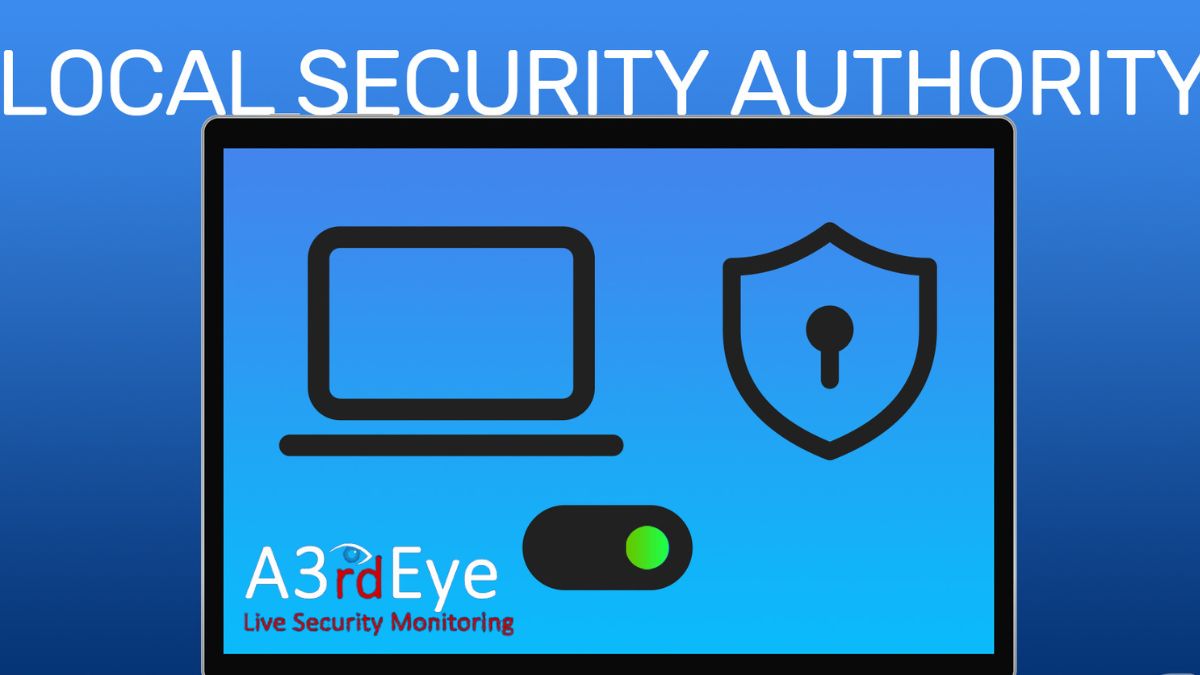
what is local security authority protection
In the field of cybersecurity, safeguarding private data and keeping infrastructure secure are of utmost importance. Protecting local security authorities (LSA Protection) is essential for preventing unauthorized use of authentication credentials and preventing unauthorized use of resources. The purpose of this essay is to educate readers on what LSA Protection is, why it’s important, and what they can do to make it work better for them.
What is the Local Security Authority (LSA)?
The Local Security Authority (LSA) is a crucial part of Windows that is in charge of administering authentication and security rules. It verifies the identities of users trying to log in and determines whether or not to let them in based on the privileges associated with their accounts. In terms of security, LSA is in charge of enforcing password restrictions, verifying login credentials, and producing security tokens, among other things.
Importance of Local Security Authority Protection
To prevent hackers from gaining access to a system and to keep credentials safe, LSA Protection is essential. By putting in place strong LSA Protection methods, businesses can reduce their vulnerability to attacks like credential theft and unlawful privilege escalation. It’s a safeguard against in-depth assaults on authentication systems.
How Does Local Security Authority Protection Work?
When on, LSA Protection uses a number of safeguards to protect the authenticity of the authentication procedure. The LSA process can be secured from interference by placing it in its own secure memory region using a mechanism called LSASS (Local Security Authority Subsystem Service). LSA Protection also requires the use of robust encryption algorithms when securing credentials, making them more difficult to breach.
Common Vulnerabilities in Local Security Authority Protection
LSA Protection is crucial, but it can still be breached if it isn’t set up or maintained correctly. Improving a company’s security measures requires first gaining awareness of these flaws.
Credential Theft and Mimikatz Attacks
Theft of credentials is a prevalent security risk, and technologies like Mimikatz make it easy to commit. Sensitive credentials can be stolen from memory via LSASS process memory dumps if an attacker is able to bypass security measures. This emphasizes the need to protect private information and take precautions against cyber threats.
Pass-the-Hash Attacks
Pass-the-hash attacks are another serious security hole. To perform these attacks, the attacker must obtain a hash of a password stored in LSASS memory and use that hash to authenticate as a user without providing the actual password. The risk can be reduced by using a strong encryption technique like NTLMv2 or Kerberos and keeping computers up to date.
Golden Ticket Attacks
Forging authentication tickets that grant full system access is possible because of vulnerabilities in the Kerberos authentication protocol, which are exploited in Golden Ticket attacks. Such attacks can be detected and thwarted with the help of regular monitoring of authentication logs and Kerberos setup.
Best Practices for Enhancing Local Security Authority Protection
The following are some recommendations for enterprises looking to improve LSA Protection and reduce risks:
Implementing Strong Password Policies
Strong password policies, such as requiring difficult passwords and rotating passwords on a regular basis, can greatly reduce the risk of credential theft and unauthorized access if they are enforced.
Enabling Multi-Factor Authentication
By demanding factors in addition to a user’s password, multi-factor authentication (MFA) increases security. Multi-factor authentication (MFA) makes it more difficult for hackers to break into user accounts by requiring them to provide additional information beyond just a password.
Regular Patching and Updating
To close known security holes and lessen the likelihood of a successful attack, it is essential to keep systems patched and updated to the newest version.
Restricting LSA Privileges
The potential damage from a successful attack can be mitigated by restricting the permissions allowed to the LSA process and any related accounts. Organizations can reduce their vulnerability to attacks and secure their systems by strictly enforcing the principle of least privilege.
Conclusion
Protecting local security authorities is essential for preventing unauthorized users from gaining access to sensitive data and systems. Organizations can improve their security posture and better fight against attacks if they obtain a deeper grasp of its function, prevalent weaknesses, and best practices. Protecting LSAs as part of a larger cybersecurity plan is crucial for limiting exposure and keeping private data safe and accessible.
Why is it crucial for businesses to have protection from local security authorities?
Organizations can better defend themselves from intrusion attempts, reduce the risk of credential theft, and improve their overall security posture if they have Local Security Authority Protection in place. Organizations can safeguard their sensitive credentials and reduce the likelihood of security breaches by deploying strong LSA Protection procedures.
Can all forms of credential theft be stopped by LSA Protection?
While LSA Protection does help prevent credential theft in some ways, it is not a foolproof system. Organizations may dramatically reduce the likelihood of successful credential theft attempts by deploying robust encryption techniques, safeguarding sensitive data, and following best practices.
How frequently should businesses upgrade their systems to ensure LSA Protection?
Maintaining reliable LSA Protection requires diligent attention to system patching and updating. Security patches and upgrades given by software suppliers should be applied immediately by businesses in order to fix previously discovered flaws and guard against newly discovered threats.
Is there anything else that businesses can do to better secure LSA data?
Organizations can also benefit by installing advanced threat detection and monitoring technologies, conducting frequent security assessments, and providing personnel with extensive cybersecurity training in addition to the best practices highlighted in this article. By taking these steps, LSA Protection and overall security can be strengthened.
Where can I read up on cybersecurity best practices and LSA Protection?
Industry-leading resources, such as official documentation from software vendors, cybersecurity blogs, and respectable online security groups, are excellent places to study LSA Protection and cybersecurity best practices. Cybersecurity experts and firms offering specialized security services can also be consulted for advice and assistance.

what is local security authority protection

